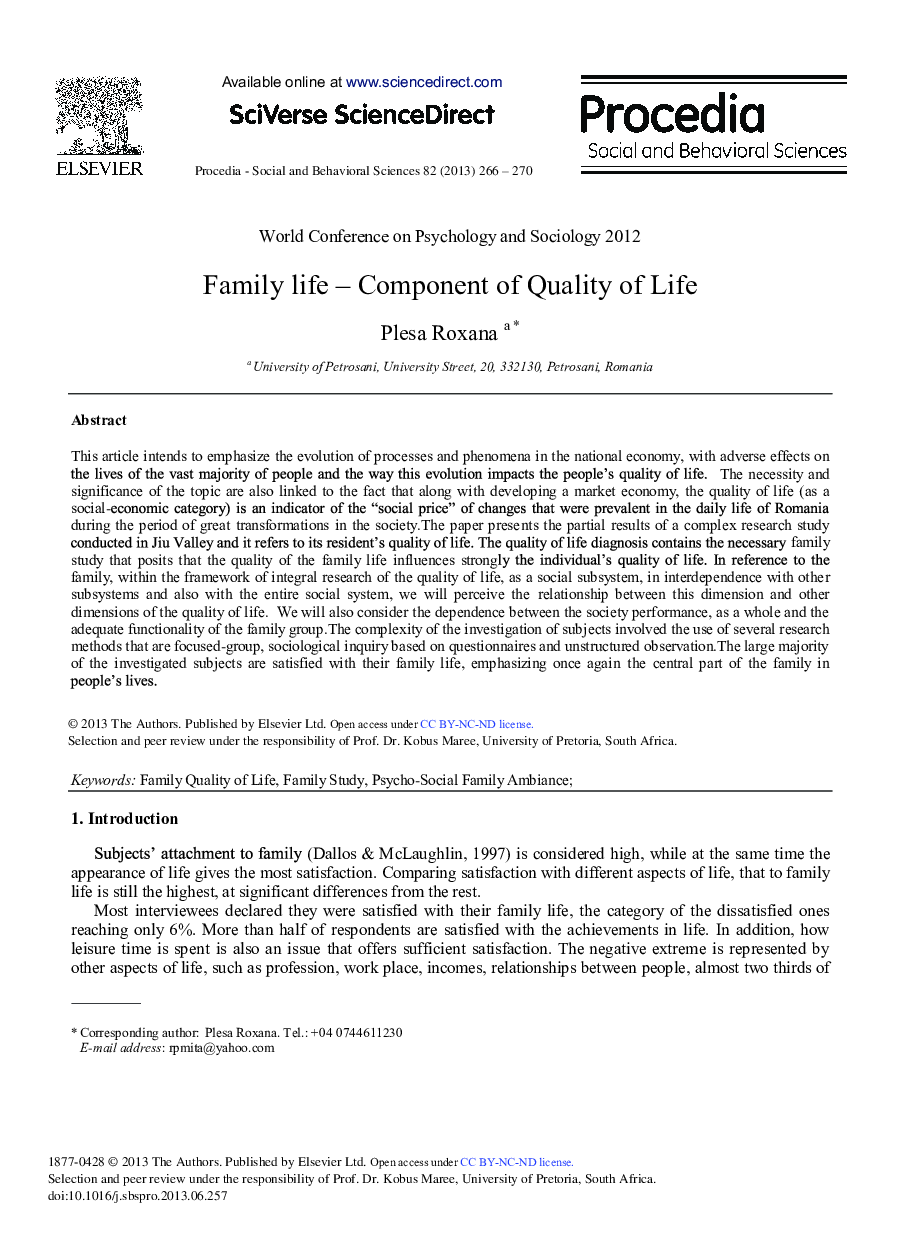| کد مقاله | کد نشریه | سال انتشار | مقاله انگلیسی | نسخه تمام متن |
|---|---|---|---|---|
| 1118994 | 1488477 | 2013 | 5 صفحه PDF | دانلود رایگان |

This article intends to emphasize the evolution of processes and phenomena in the national economy, with adverse effects on the lives of the vast majority of people and the way this evolution impacts the people's quality of life. The necessity and significance of the topic are also linked to the fact that along with developing a market economy, the quality of life (as a social-economic category) is an indicator of the “social price” of changes that were prevalent in the daily life of Romania during the period of great transformations in the society.The paper presents the partial results of a complex research study conducted in Jiu Valley and it refers to its resident's quality of life. The quality of life diagnosis contains the necessary family study that posits that the quality of the family life influences strongly the individual's quality of life. In reference to the family, within the framework of integral research of the quality of life, as a social subsystem, in interdependence with other subsystems and also with the entire social system, we will perceive the relationship between this dimension and other dimensions of the quality of life. We will also consider the dependence between the society performance, as a whole and the adequate functionality of the family group.The complexity of the investigation of subjects involved the use of several research methods that are focused-group, sociological inquiry based on questionnaires and unstructured observation.The large majority of the investigated subjects are satisfied with their family life, emphasizing once again the central part of the family in people's lives.
Journal: Procedia - Social and Behavioral Sciences - Volume 82, 3 July 2013, Pages 266-270